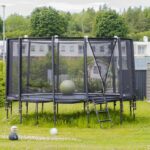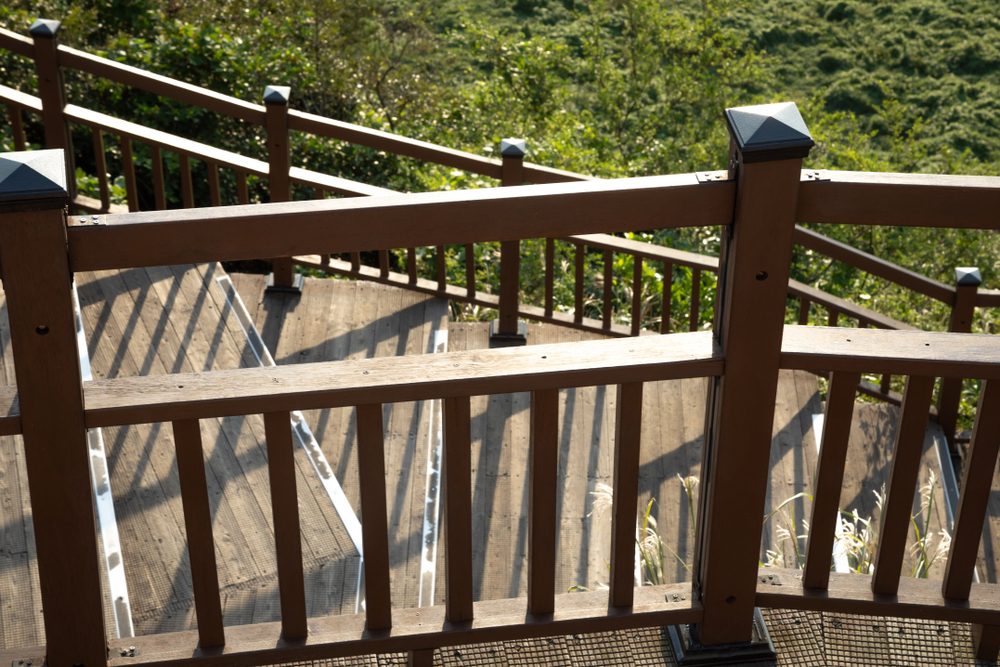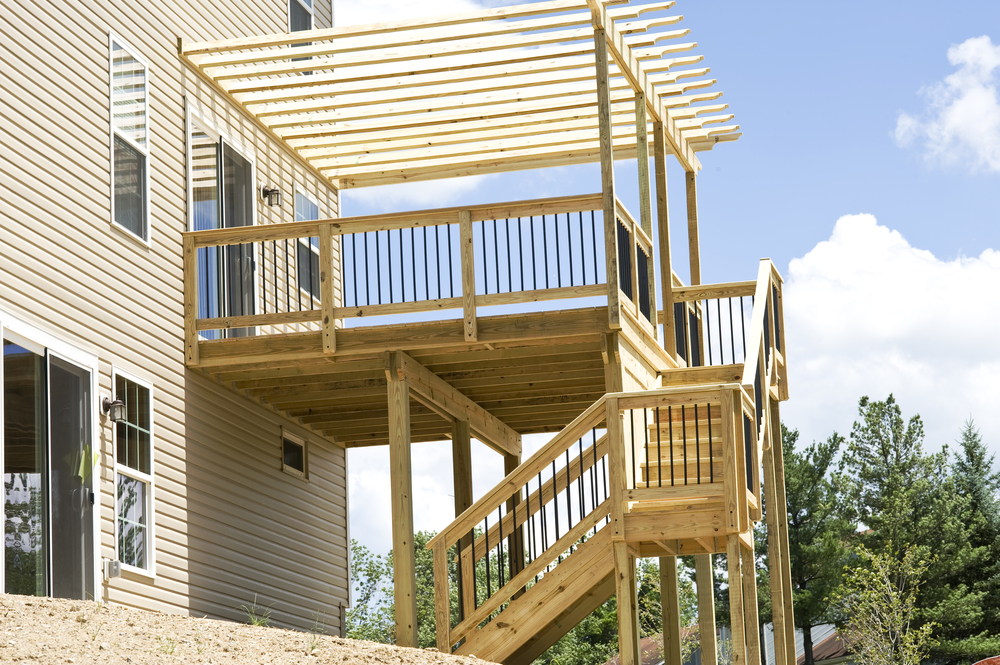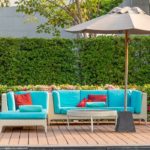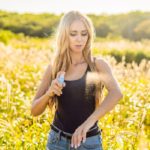It’s essential to consider the surrounding environment and landscaping options when you decide where to place your trampoline. While you can place your trampoline over grass, it will likely wither and die without proper sunlight. Luckily, there are several other options to consider.
As an alternative to trying to grow grass under your trampoline, you can add rubber mulch, wood chips, play sand, artificial grass, stone pathways, or rubber mats. The best option ultimately depends on how much you’re willing to spend and what you think will look best.
When landscaping underneath your trampoline, you don’t need to transform your whole backyard. In fact, just a few small, easy changes can do the trick. Let’s look at what you should do with the space under your trampoline, whether you can grow grass under it, and which grass alternatives are best.
What Should You Do With the Space Under Your Trampoline?
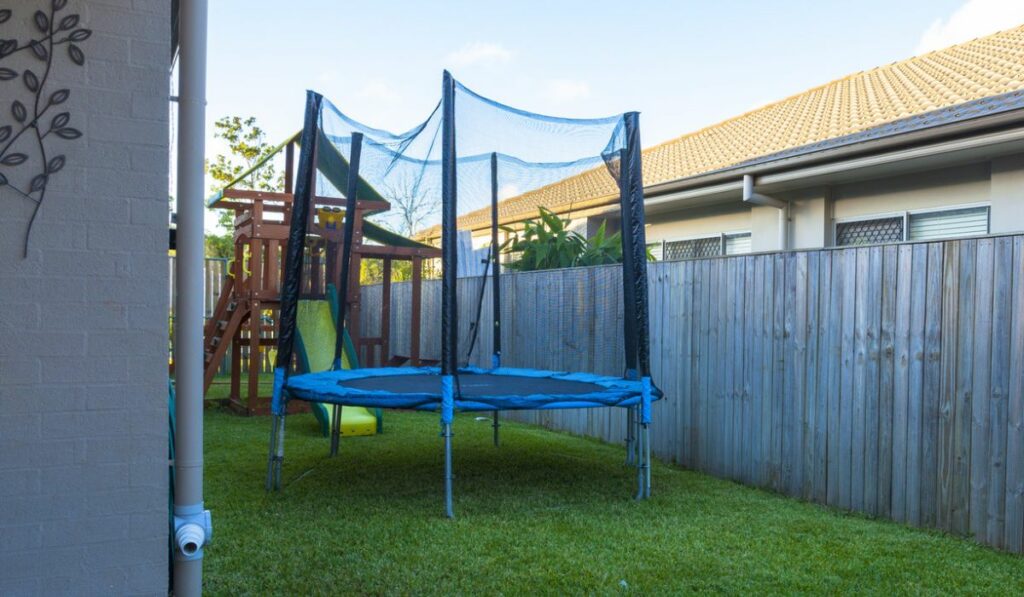
After purchasing a trampoline for your backyard, you’ll need something to fill the space underneath it. While not everything is suitable for the space under a trampoline, it’s best to put something there so that you don’t have to deal with an unctrollable weedy mess.
After placing the trampoline’s legs on strong, sturdy supports, it’s best to add a thick layer of mulch, or some other cushioning material, under the trampoline. This additional layer will suppress weeds and work as a safety mat as well, protecting both your kids and your backyard.
Will Grass Grow Under Your Trampoline?
The answer to this question ultimately depends on the season and weather in your area, the weight of the trampoline, the type of grass in your backyard, sprinkler placement, and several other factors.
If you’re going for a more aesthetically pleasing look for your backyard, then grass is an excellent option for around and under your trampoline. Since almost everyone already has grass growing in their backyard, it’s easier to stick with the existing lush greenery.
It’s also safer than a concrete pad, a brick patio, and even just plain bare ground. However, this doesn’t mean that it’s the safest option available today. While it does cushion some falls, there are other better options that are safer and much more effective at impact absorption.
It’s also important to note that since the trampoline will block most of the sunlight reaching the grass, the grass will probably start to wither and die unless you take the proper steps to keep it lush and green.
Of course, this greatly depends on your area and the type of grass in your backyard, but it’s something you should consider if you’re planning on growing grass under your trampoline.
Can You Grow a Garden Under a Trampoline?
While you can grow a garden under your trampoline, keep in mind that your choice of plants will be extremely limited. It’s best to grow plants that don’t grow high, such as pulmonaria, Lamium, astrantia, and odorata.
If the ground under your trampoline is too dry and shady, then it’s best to grow plants that thrive in this condition, such as ferns. However, remember that you’ll need to water them frequently and regularly.
If your trampoline allows water to pass through, then you can grow shade-growers, such as periwinkle, as well. However, if your trampoline doesn’t allow water to pass through, then it’s best to forego an under-trampoline garden completely and opt for something else instead.
Alternative to Grass
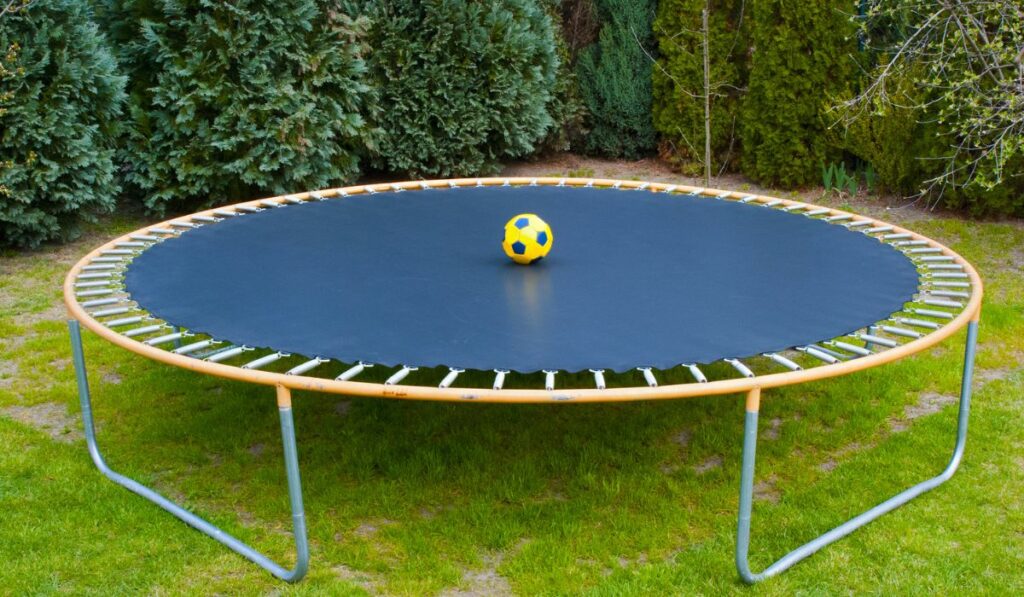
Level grass offers a decent surface for under your trampoline, but there are several drawbacks of having grass under your trampoline, including dying grass, the trampoline legs sinking straight into the dirt, and mud getting the frame dirty. Soft soil can also cause the trampoline to become lopsided, which is extremely dangerous.
Luckily, there are several other alternatives that are much better and safer than grass:
Rubber Mulch
Rubber mulch (on Amazon) is something that helps ensure a soft landing, which is why most football fields and playgrounds are filled with the stuff. It also deteriorates extremely slowly, so it has a longer life than almost anything else you can put under the trampoline.
It’s bouncier and softer than other options as well, which means you won’t need as thick of a layer as you would with some other alternatives.
Like wood mulch, this material works best when it’s at a depth of around 10 to 12 inches, so you’ll have to dig a bit around your trampoline. Otherwise, it will probably migrate all around your yard.
Remember that the amount of mulch you need depends on the size and shape of your trampoline. For instance, if you own a 14-foot circle trampoline, then you’ll need about 43 cubic feet, or 156 square feet, of mulch.
However, keep in mind that rubber mulch is a choking hazard and is much more expensive than most alternatives. The good news is that it’s resistant to rot and won’t mold, so you won’t need to replace it as quickly as you would wood mulch.
Wood Chips
Wood chips are another natural material you can place under your trampoline. This option is especially ideal for those who live around wooded areas or in places where the ground is mostly covered with pine needles instead of grass.
Along with the woodsy aesthetic these chips provide, you also get the benefit of additional safety. If you add a thick enough layer of wood chips under your trampoline, you’ll be able to prevent serious injuries should your kids fall off the side of your trampoline.
In fact, even playgrounds sometimes use wood chips for better shock absorption. According to playground safety organizations, it’s best to add wood mulch at a depth of around 12 inches for effective shock absorption. This means that you’ll have to dig some type of trench around your trampoline and then fill it completely with wood chips.
However, there are a few things you should keep in mind before settling on this material:
- Wood chips might attract insects.
- Some wood chips come treated with chemicals.
- Wood chips can become a breeding ground for bacteria and mold.
If you know that your kids won’t play with the wood chips, then you don’t need to worry about these things. However, we all know how kids can be.
Play Sand
Play sand is very similar to rubber mulch and offers most of the same advantages. It’s very soft and absorbs impact pretty well. In fact, play sand will be better at cushioning your fall than a regular lawn.
However, it’s a bit expensive. Each bag is able to cover a ½ cubic foot and costs around $5, so you’ll need about 80 bags and $400 to fill the 43 cubic feet of space under a typical 14-foot circle trampoline.
Artificial Grass
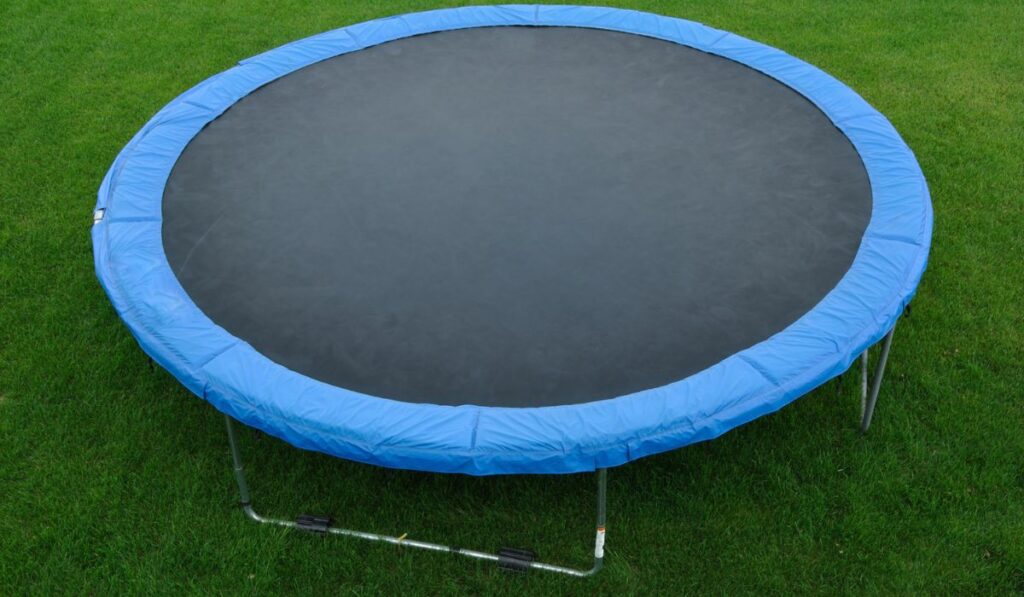
Rolls of fake grass (on Amazon) are available in several different sizes, making them ideal for people who find it difficult to keep the grass underneath their trampoline alive, but still prefer the look of lush, green grass there.
A grass mat will also help prevent the formation of divots in the ground from the trampoline legs, ensuring it doesn’t sink into the ground or topple over.
However, keep in mind that the absorption capabilities of artificial turf are almost the same as actual grass. While some mats are thicker and come with extra cushioning built in, it’s best to place some rubber mats under the artificial turf for additional safety.
This combination will give you the best of both worlds, as you’ll have something that’s safe and aesthetically pleasing.
Stone Pathways
Having a stone pathway underneath your trampoline is an excellent option that requires very little maintenance. However, make sure you place some type of soft matting over it because while the stones will prevent weeds from growing under the trampoline, it’ll hurt quite a bit if you fall directly on it.
It’s also advisable to have a protective cage or netting around the trampoline if you’re placing it over a stone pathway. This will help prevent jumpers from falling over the side and suffering serious injuries.
Pea Gravel
Used to cover playground surfaces, pea gravel (on Amazon) is an excellent pocket-friendly alternative that will absorb a good amount of impact if you add enough of it under your trampoline.
Since these tiny, pea-sized rocks are natural, look good, and provide much better shock absorption than sand or grass, they’re used in most playgrounds around the US.
It’s better to have pea gravel at a depth of around 12-inches or more, so that there’s a good cushion if anyone falls off the trampoline. The material is also available at a low price, making it one of the cheapest alternatives on this list.
Some people already have pea gravel in their backyard, so adding more of it underneath the trampoline is easier and more convenient as well. However, the material is a serious choking hazard for children under five, so make sure to take this factor into account if you have little kids.
Unlike wood chips and sand, pea gravel doesn’t attract any neighborhood animals or insects. It also offers good drainage and doesn’t develop bacteria or mold easily, making it perfectly safe for bigger kids to play around.
Rubber Mats
There are several different types of rubber mats available today, each with varying prices. You can place an interlocking exercise mat underneath your trampoline, like this one from BalanceFrom (on Amazon). This style is extremely affordable, but you can also opt for something a bit thicker if you prefer.
Although these mats don’t offer much in the aesthetics aspect, they’re excellent at making trampoline use safe for everyone. For maximum shock absorption, it’s best to place the mats on clear and level ground.
Make sure you also check whether the mats are suitable for outdoor use before purchasing, as rain and sun exposure can damage some of the cheaper mats, causing them to break down, flake, and degrade.


